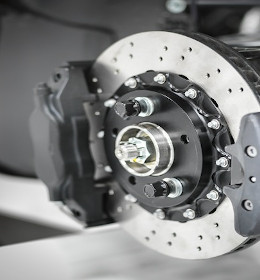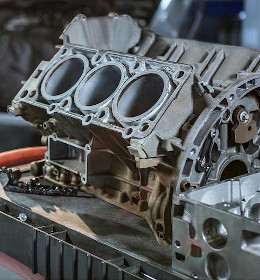Que signifie votre code Code Défaut TOYOTA ?
Grace au système OBD, les
Toyota
fabriqués après 1996 sont normalement équipés d'une prise diagnostique OBD.
Si l'ordinateur de la voiture rencontre un problème,un code d'erreur ou un code de diagnostic (DTC)
sera stocké dans la mémoire de l'ECU de la voiture.
Avec un lecteur OBD branché sur le port OBD (On-Board Diagnostics) de la voiture, vous pouvez lire la liste des codes stockés, et donc découvrir quel est le problème.
Les codes suivent une formule permettant de savoir généralement quel est le problème avant même de regarder le tableau ci-dessous.
Nous vous présentons ci-dessus une liste très complète des différents codes défauts possibles.
Si le code défaut de votre auto s'affiche au tableau de bord, vous n'aurez peut-être même pas besoin d'un lecteur OBD . il sera dans la liste .
Réparer le code défaut de votre auto, c'est potentiellement simple à faire avec vos revues et méthodes techniques.

Réparer le code défaut de votre auto, c’est potentiellement simple à faire avec nos revues et méthodes techniques
| Code | Libellé |
|---|---|
| P0CCF | Charging port door position sensor circuit high |
| P0CD0 | Charging port door position sensor circuit intermittent/erratic |
| P0CD1 | Charging port door unlock control circuit/open |
| P0CD2 | Charging port door unlock control circuit range/performance |
| P0CD3 | Charging port door unlock control circuit low |
| P0CD4 | Charging port door unlock control circuit high |
| P0CD5 | High-voltage battery pack coolant temperature sensor 2 circuit/open |
| P0CD6 | High-voltage battery pack coolant temperature sensor 2 circuit range/performance |
| P0CD7 | High-voltage battery pack coolant temperature sensor 2 circuit low |
| P0CD8 | High-voltage battery pack coolant temperature sensor 2 circuit high |
| P0CD9 | High-voltage battery pack coolant temperature sensor 2 circuit intermittent/erratic |
| P0CDF | High-voltage battery pack coolant control valve 1 control circuit/open |
| P0CE0 | High-voltage battery pack coolant control valve 1 performance/stuck off |
| P0CE1 | High-voltage battery pack coolant control valve 1 stuck on |
| P0CE2 | High-voltage battery pack coolant control valve 1 control circuit low |
| P0CE3 | High-voltage battery pack coolant control valve 1 control circuit high |
| P0CE4 | High-voltage battery pack coolant control valve position sensor circuit/open |
| P0CE5 | High-voltage battery pack coolant control valve position sensor circuit range/performance |
| P0CE6 | High-voltage battery pack coolant control valve position sensor circuit low |
| P0CE7 | High-voltage battery pack coolant control valve position sensor circuit high |
| P0CE8 | High-voltage battery pack coolant control valve position sensor circuit intermittent/erratic |
| P0CE9 | High-voltage electronics, coolant pump control circuit/open |
| P0CEA | High-voltage electronics, coolant pump performance |
| P0CEB | High-voltage electronics, coolant pump control circuit low |
| P0CEC | High-voltage electronics, coolant pump control circuit high |
| P0CED | High-voltage electronics, coolant pump enable circuit/open |
| P0D07 | Battery charging system positive contact circuit/open |
| P0D08 | Battery charging system positive contact stuck closed |
| P0D09 | Battery charging system positive contact stuck open |
| P0D0A | Battery charging system positive contact control circuit/open |
| P0D0B | Battery charging system positive contact control circuit range/performance |
| P0D0C | Battery charging system positive contact control circuit low |
| P0D0D | Battery charging system positive contact control circuit high |
| P0D0E | Battery charging system negative contact circuit/open |
| P0D0F | Battery charging system negative contact stuck closed |
| P0D10 | Battery charging system negative contact stuck open |
| P0D11 | Battery charging system negative contact control circuit/open |
| P0D12 | Battery charging system negative contact control circuit range/performance |
| P0D13 | Battery charging system negative contact control circuit low |
| P0D14 | Battery charging system negative contact control circuit high |
| P0D15 | Battery charging system high-voltage interlock circuit/open |
| P0D16 | Battery charging system high-voltage interlock circuit performance |
| P0D17 | Battery charging system high-voltage interlock circuit low |
| P0D18 | Battery charging system high-voltage interlock circuit high |
| P0D19 | Battery charging system high-voltage interlock circuit intermittent/erratic |
| P0D1A | High-voltage battery pack coolant control valve 2 control circuit/open |
| P0D1B | High-voltage battery pack coolant control valve 2 performance/stuck off |
| P0D1C | High-voltage battery pack coolant control valve 2 stuck on |
| P0D1D | High-voltage battery pack coolant control valve 2 control circuit low |
| P0D1E | High-voltage battery pack coolant control valve 2 control circuit high |
| P0D20 | Battery charger output voltage performance |
| P0D21 | Battery charger output voltage too low |
| P0D22 | Battery charger output current performance |
| P0D23 | Battery charger output, short circuit |
| P0D24 | Battery charger temperature too high |
| P0D25 | Battery charging system pre-charge time too short |
| P0D26 | Battery charging system pre-charge time too long |
| P0D27 | Battery charger input voltage too low |
| P0D28 | Battery charger input voltage too high |
| P0D29 | Battery charger input current too low |
| P0D2A | Battery charger input current too high |
| P0D32 | DC-DC converter, temperature too high |
| P0D33 | DC-DC converter, current too high |
| P0D38 | Battery charger input current sensor circuit/open |
| P0D39 | Battery charger input current sensor circuit range/performance |
| P0D3A | Battery charger input current sensor circuit low |
| P0D3B | Battery charger input current sensor circuit high |
| P0D3C | Battery charger input current sensor circuit intermittent/erratic |
| P0D3D | Battery charger input voltage sensor circuit/open |
| P0D3E | Battery charger input voltage sensor circuit range/performance |
| P0D3F | Battery charger input voltage sensor circuit low |
| P0D40 | Battery charger input voltage sensor circuit high |
| P0D41 | Battery charger input voltage sensor circuit intermittent/erratic |
| P0D42 | 14V battery charger, output voltage sensor circuit/open |
| P0D43 | 14V battery charger, output voltage sensor circuit range/performance |
| P0D44 | 14V battery charger, output voltage sensor circuit low |
| P0D45 | 14V battery charger, output voltage sensor circuit high |
| P0D46 | 14V battery charger, output voltage sensor circuit intermittent/erratic |
| P0D47 | 14V battery charger, output current sensor circuit/open |
| P0D48 | 14V battery charger, output current sensor circuit range/performance |
| P0D49 | 14V battery charger, output current sensor circuit low |
| P0D4A | 14V battery charger, output current sensor circuit high |
| P0D4B | 14V battery charger, output current sensor circuit intermittent/erratic |
| P0D4C | High-voltage battery charger, output voltage sensor circuit/open |
| P0D4D | High-voltage battery charger, output voltage sensor circuit range/performance |
| P0D4E | High-voltage battery charger, output voltage sensor circuit low |
| P0D4F | High-voltage battery charger, output voltage sensor circuit high |
| P0D50 | High-voltage battery charger, output voltage sensor circuit intermittent/erratic |
| P0D51 | High-voltage battery charger, output current sensor circuit/open |
| P0D52 | High-voltage battery charger, output current sensor circuit range/performance |
| P0D53 | High-voltage battery charger, output current sensor circuit low |
| P0D54 | High-voltage battery charger, output current sensor circuit high |
| P0D5B | 14V battery charger, output voltage performance |
| P0D5C | High-voltage battery charger, output voltage performance |
| P0D5D | High-voltage battery charger, system discharge time too short |
| P0D5E | High-voltage battery charger, system discharge time too long |
| P0D5F | High-voltage battery pack cooling fan 2 sensor circuit/open |
| P0D60 | High-voltage battery pack cooling fan 2 sensor circuit range/performance |
| P0D61 | High-voltage battery pack cooling fan 2 sensor circuit low |
| P0D62 | High-voltage battery pack cooling fan 2 sensor circuit high |
DEFINISSEZ VOTRE MARQUE POUR ACCEDER A VOS CODES DEFAUTS
-
Revue technique RTA

Revue Technique Automobile
La revue technique de référence depuis 1946. La RTA est une revue papier pour tous publics, qui vous permet d'effectuer les petites et les grosses réparations
 Voir le descriptif
Voir le descriptif
-
Entretien courant MTA

Méthode Technique Automobile
La MTA est issue de nos outils destinés aux pros de l'auto. Ces méthodes en ligne permettent d'effectuer les opérations de maintenances de votre auto (filtres, courroies, etc.)
 Voir le descriptif
Voir le descriptif
-
Toutes réparations MTAx

Méthode Technique Automobile Expert
La MTA expert est un outil en ligne destiné aux experts en mécanique et en carrosserie, pour effectuer tous types de réparations sur une voiture.
 Voir le descriptif
Voir le descriptif















